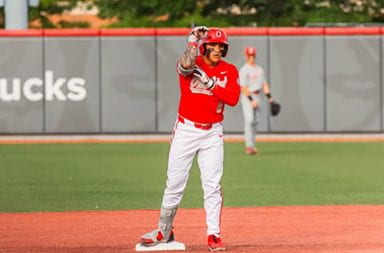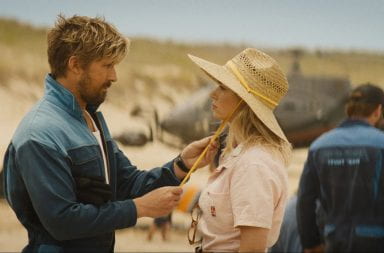As fans do their best to recall the greatest players in Ohio State football history, it is easy for them to bring up the six Heisman winners and the great players of late. The knowledgeable ones could rattle off Art Schlichter or Jim Stillwagon. One player, however, is often overlooked.
Before Eddie, Archie, and even Hopalong, there was Bill Willis. Willis was to football what Jackie Robinson was to baseball. He didn’t just excel, he changed the culture.
Willis was a star defensive guard for the Buckeyes under legendary coach Paul Brown from 1942 to 1944. He was a key contributor on OSU’s first ever national championship team in 1942 and was also OSU’s first ever black All-American.
“My dad used to tell me just how good Bill Willis was, and that he was a great one,” said Archie Griffin, two-time Heisman trophy winner and president of the OSU Alumni Association. “He also used to tell me the fact that he was one of the first African-Americans to break into the NFL. Certainly when I got the chance to meet him, I was pretty much in awe.”
A Columbus native, Willis came to OSU to play football and run track. At 6-feet-2-inches and 215 pounds, Willis was looked at as too small to play football and too big to run track.
But this didn’t prevent Willis from succeeding in both, especially football.
“His real claim to fame was that he was just so quick off the ball. He was just through, and into the backfield to break up a play,” said Jack Park, the author of The Official Ohio State Football Encyclopedia.
Although he was at his best when he was playing defensive guard (modern day defensive tackle), Willis also played offense and was a standout offensive tackle protecting the likes of Les Horvath, who won the Heisman trophy during Willis’ senior year in 1944.
A two-time All-American in 1943 and 1944, Willis went 21-7 during his college career and 2-1 against Michigan, where he tended to have his best games.
Willis was part of the OSU team that beat Michigan in 1942 to win the national championship. In what Park believes to be one of the classic OSU-Michigan games in 1944, Park said Willis had a tremendous game en route to an 18-14 win over the Wolverines in what would be the first time the OSU-Michigan game ever decided the outright Big Ten champion.
The Heisman trophy was the only award that existed at the time in college football, and just like today, was typically awarded to offensive players. Had there have been the defensive lineman awards back then that exist today, Willis would likely have had a case full.
“The Outland [Trophy] and the Lombardi Award weren’t around when Bill was playing at Ohio State,” Park said. “Had they been, I think it’s pretty safe to say that Bill Willis would probably have won those, and if not been very high in the voting for those awards.”
Along with the Lombardi and the Outland, the Bill Willis Trophy is awarded every year to the best defensive lineman in college football. The trophy has been awarded to the likes of Warren Sapp, Julius Peppers, and most recently Ndamukong Suh from the University of Nebraska.
OSU has a history littered with fabulous defensive players, including Jack Tatum and Chris Spielman. Willis, however, is the only one of them to have had his jersey retired at Ohio Stadium. Griffin, who also had his jersey retired at Ohio Stadium, was pleased to see Willis added to the group.
“He was a guy that when you talk about a century of football at Ohio State, was one of the guys who really stood out,” Griffin said. “He was a difference maker, he made things happen. Certainly offenses didn’t want to run the ball his way, but even when they did, he was able to run it down.”
Park ranks Willis among the best linemen in OSU history.
“I’ve been asked many times, ‘Who are the greatest linemen in Ohio State history?'” Park said. “I’ve always come up with four — two are offensive and two are defensive. The two defensive would be Willis and Jim Parker, who played both ways, and I always thought John Hicks would be one of those, and I always thought that Orlando Pace would be, as well.”
When his playing days at OSU were over, Willis took a coaching job for a year at Kentucky State College in 1945. Willis didn’t like his chances at being able to play in the NFL, seeing that no African-American had played in the NFL since 1933, and none had ever started a game.
“I’m sure it wasn’t easy for Bill,” Griffin said. “I’m sure there were times where they wouldn’t have let him play, certainly as you go south, they weren’t going to let him play. I’m sure that was a very difficult situation for him.”
The next year, however, Willis’ former coach at OSU, Paul Brown, started up the Cleveland Browns in the All-American Football Conference and wanted him to play. Willis joined the Browns in 1946 and became one of the first players to break the color barrier in professional football, a full year before Jackie Robinson broke the baseball barrier in 1947.
“When that type of thing happens, it opens doors,” Griffin said. “I think it really paved the way for African-Americans to participate in sports the way that they do today.”
This would begin eight years of stardom for Willis, as he went on to be an eight-time All-Pro selection with the Browns from 1946-1953 and was inducted into the NFL Hall of Fame in 1977.
Park said Willis was always one of Paul Brown’s favorite players, which, given the success Brown had at virtually every level of football, was a great honor.
“Paul Brown thought the world of him,” Park said. “They were such close friends over the years that I can remember when the Bengals played in their first Super Bowl, the camera was pointed up at Paul Brown’s box, and you could see Paul and Mary Brown up there, and seated right next to them were Mr. and Mrs. Willis.”
Willis passed away just weeks after having his jersey retired at OSU in 2007 at the age of 86, but his “99” will forever be up in the stands for fans to remember.
“I will always remember Bill as a great football player, a great father and a great husband,” Griffin said. “I always thought of Bill as a gentle giant, and a very wise man. When Bill would talk, people listened, and you would hang on to every word that he would say. He was the kind of guy you just enjoyed being around.”



